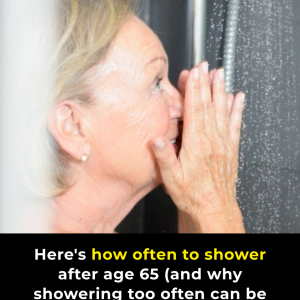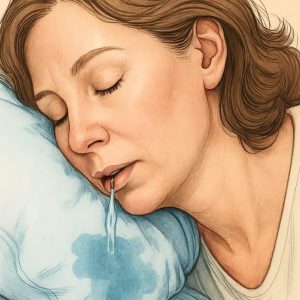
When you first get a pillow, it’s bright white and fluffy. But after just a few months of use, it can start to take on a yellowish tint that looks less than hygienic. Is it just dirt, wear and tear, or something else?
The answer is simple: that yellowing is caused by a buildup of sweat, body oils, saliva, and skincare product residue. Even if you change your pillowcase regularly, these substances gradually seep through and discolor the pillow itself.
Let’s take a closer look at the main causes of pillow yellowing.

The Main Causes of Yellow Stains on Pillows
Nighttime Sweating
Your body naturally sweats during the night—even if you don’t notice it. On average, a person can lose between 500 and 700 ml of sweat per night. That moisture gets absorbed into fabrics and, over time, leaves yellow stains.
Body Oils
Your skin constantly produces natural oils that transfer to your bedding. Unlike sweat, these oils are greasy and harder to remove. Over time, they soak into your pillow and contribute to yellowing.
Saliva
If you tend to drool while sleeping, it can also speed up discoloration. Saliva contains enzymes that, when absorbed into fabric, can change its color.
Skincare Products and Makeup
Night creams, serums, and other skincare products applied before bed can also stain your pillow. Even after washing your face, residue may linger on your skin and transfer to the fabric overnight.

How to Prevent Your Pillows From Turning Yellow
Fortunately, there are several easy tips to help prevent stains and keep your pillows fresh for longer.
Use a Protective Pillow Cover
A waterproof or breathable pillow protector acts as a barrier between your pillow and sweat or oils. These covers are machine washable and much easier to clean than the pillow itself.
Change Your Pillowcase Frequently
Wash your pillowcases at least once a week to prevent the buildup of oils and dirt. Use a hot wash cycle (around 140°F or 60°C) to kill bacteria and remove residue effectively.
Avoid Oily Products Before Bed
If you use a night cream, give it time to fully absorb into your skin before lying down. This reduces the chances of it transferring to your pillow.
Keep Your Bedroom Cool at Night
Sleeping in a cooler room reduces nighttime sweating. Aim to keep your bedroom between 64°F and 68°F (18–20°C) to prevent excess moisture from building up in your bedding.

How to Clean a Yellowed Pillow
If your pillow already has yellow stains, here’s how to bring it back to life.
Check the Care Label
Not all pillows can be washed the same way. Check whether your pillow is machine-washable or requires dry cleaning.
Pre-Treat Stains
Before washing, apply a mix of baking soda and white vinegar to the yellowed areas. Let it sit for 15 minutes to help lift the stains.
Wash With Hot Water
If your pillow is machine-washable, use warm or hot water along with a gentle detergent and a cup of baking soda. This will help eliminate stains and odors.
Dry Thoroughly
Proper drying is essential to prevent mold. Toss your pillow into the dryer with clean tennis balls or dryer balls to help it stay fluffy and dry evenly.

When Should You Replace Your Pillow?
Even with great care, pillows don’t last forever. Over time, they lose their shape and accumulate allergens.
When to Replace:
- Every 1 to 2 years for synthetic pillows.
- Every 2 to 3 years for down or feather pillows.
- If your pillow stays flat or lumpy even after washing.
Final Thoughts: Simple Care for Better Sleep
Yellow stains on your pillow are completely normal—but they don’t have to be permanent. By using a protective cover, washing regularly, and drying properly, you can extend your pillow’s life and keep your sleep environment clean and healthy.
So instead of tossing it out right away, try these easy tips and give your pillow a fresh new start!




